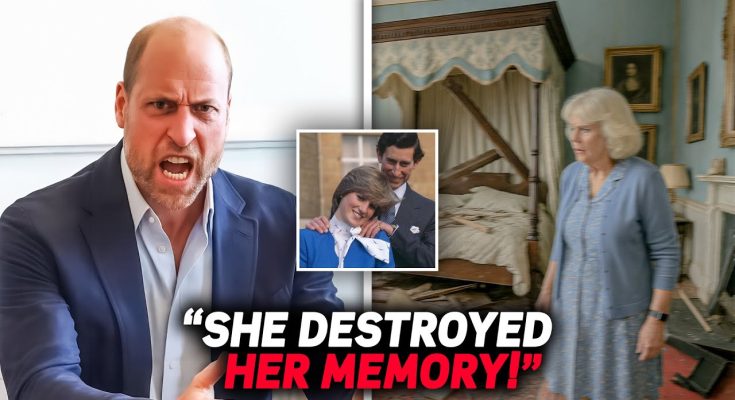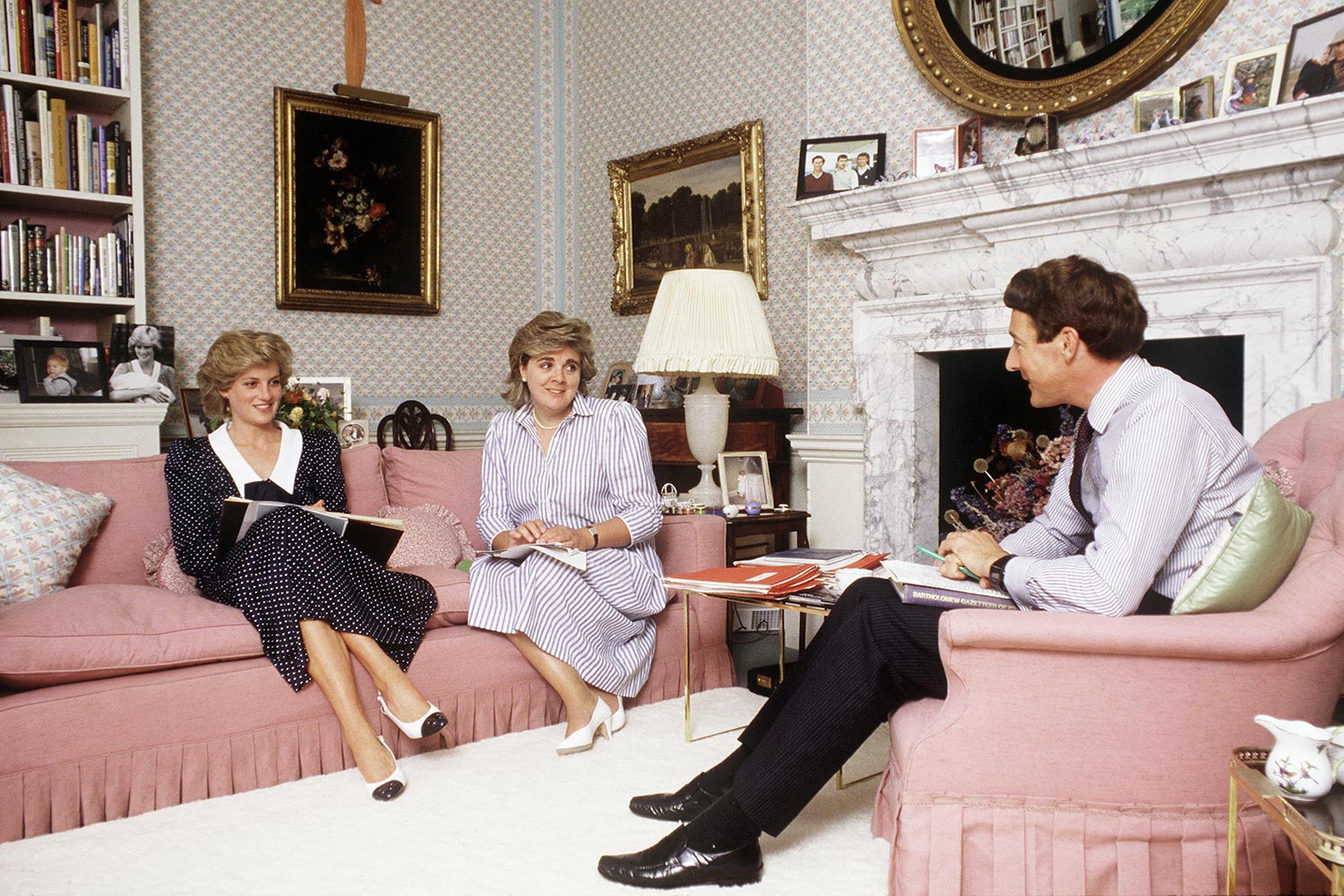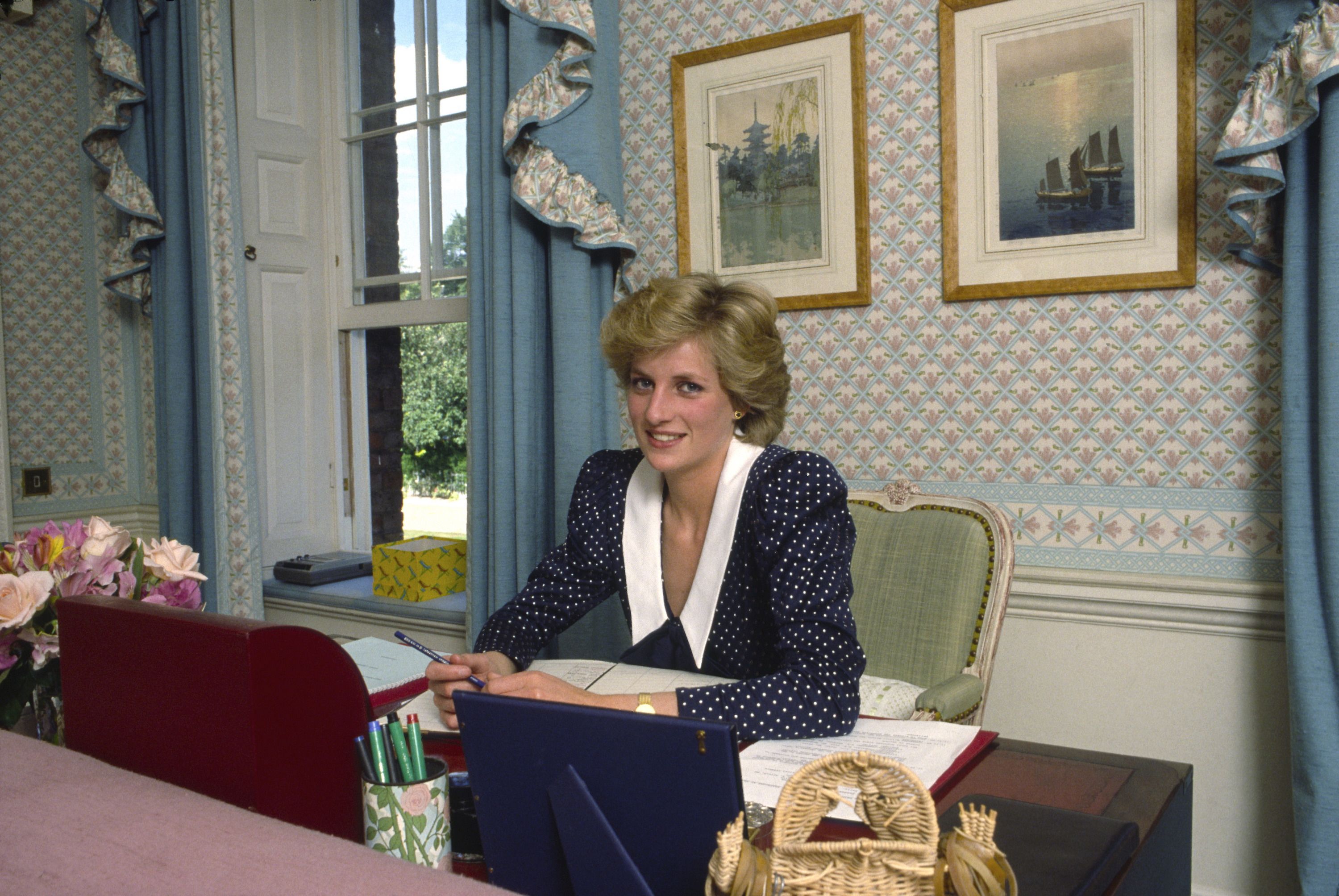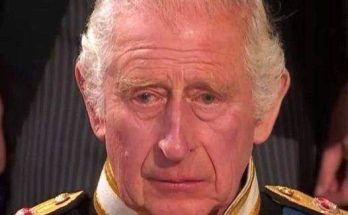The Night William Fought for His Mother’s Memory A Palace Story That Refuses to Fade

Kensington Palace has always had an uncanny silence — the kind that feels like it’s listening. And deep within its west wing, a single locked room kept its own quiet vigil for nearly thirty years: Princess Diana’s private sanctuary.
It wasn’t merely a room. It was breath suspended in time — the faint trace of her perfume still clinging to the velvet drapes, the green desk where she once wrote late-night letters, the chair that still seemed to remember her shape. For Prince William, walking through its door was like touching her hand again. Until Queen Camilla decided history had lingered too long.
The Proposal That Broke the Silence
Camilla never said the word destroy. She didn’t have to. She spoke instead of “modernization,” of “optimizing heritage.” Words polished enough to hide a blade. Her proposal: to turn Diana’s untouched sanctuary into a minimalist reception suite.
At the palace council meeting, she laid out her vision in cool, measured tones. The crown must look forward, she said. Nostalgia cannot guide the monarchy.
William sat rigid, jaw clenched, heart pounding. To most, it was a design proposal. To him, it was an exorcism — a calculated attempt to erase the last trace of his mother.
That night, sleepless and restless, William wandered the palace corridors. He found himself outside the office of Lord Harrington, Camilla’s chief adviser. A sliver of light slipped from beneath the door. And then, her voice — crisp, commanding:
“See it sealed by dawn after the memorial. Engage outsiders. No palace staff. Raise it in one sweep. No traces.”
It wasn’t renovation. It was ambush — timed for the very morning Britain would be mourning Diana.
Discovery
William didn’t confront her. Not yet. He needed proof.
He searched his inbox, buried deep among endless correspondence, and found it: an attachment labeled Floor Plan Optimization. The blueprint opened like a wound — a bold green X carved right through Diana’s room. It wasn’t a draft. It was a signed demolition order.
Something inside him hardened. The boy who had mourned his mother became the man who would defend her.
The Allies
Kate saw it instantly — the change in his eyes, the resolve in his voice. When he placed the blueprint in her hands, she didn’t speak. She simply nodded. That was enough.
Together, they reached out to someone who still carried Diana’s memory like a heartbeat — Mrs. Mary, her old housekeeper. She came quietly, no fanfare, only tears and truth.
“There’s something I never told you,” she said, voice trembling. “Over the years, Camilla called your mother’s keepsakes
clutter. One by one, she had them removed. They vanished.”
William’s hands tightened into fists. Camilla wasn’t just erasing a room — she had been erasing Diana herself.
The Journal
That night, he searched again. And under a pile of folded linens, he found a small turquoise leather-bound journal — Diana’s handwriting dancing across its pages, soft, graceful, painfully alive.
Near the end, a letter. Typed, signed, dated just months before her death. In it, Diana wrote that if anything happened to her, she didn’t want her sanctuary preserved as a shrine. She wanted it transformed into a
sanctuary of compassion — a space dedicated to helping children, her life’s cause.
It wasn’t nostalgia she had left behind. It was a mission.
The Stand
By the time William reached the West Wing again, it was too late — workers were already inside, dismantling the space under orders from “above.” He threw open the doors, his voice cutting through the clatter:
“Stop. Now.”
They didn’t. Until he moved forward, grabbed a fallen cabinet, and righted it himself — his hands bleeding from splintered wood. When a small box fell and split open, something gleamed: a delicate ring of white gold with a tiny blue diamond. His mother’s.
He held it tight. “You will not touch another thing,” he said — and they stopped.
The Light
At dawn, William called an emergency press briefing — not in the palace, but at one of Diana’s old charities. Before cameras, he read her letter aloud.
“This is not about walls or furniture,” he said softly. “It’s about honoring a mission that began with my mother — for the children who still need her voice.”
He held up the ring, the same one that had drawn blood hours before. “Legacy,” he said, “is not something we inherit. It’s something we protect.”
The Storm
By nightfall, the world had chosen its side. Vigils bloomed outside Kensington. Thousands left flowers and children’s toys. Hashtags surged across the internet: #KeepDianasRoom, #LegacyOfCompassion.
When the royal council reconvened, Camilla arrived armed with lawyers — but she never spoke. A leaked video had surfaced: her midnight order to “raise it in one sweep.” Mrs. Mary had recorded it.
The room fell silent. Even King Charles couldn’t look at her.
The vote was unanimous. Diana’s sanctuary would remain — transformed exactly as she had wished. Camilla was stripped of her authority over palace affairs.
The Renewal
Weeks later, William returned with Kate and their children. The West Wing no longer smelled of dust or disuse. It pulsed with life — volunteers at desks, phones ringing, laughter drifting through open windows. Diana’s velvet chair still stood in the corner, but now beside it was a sign:
“The Sanctuary of Compassion — In Loving Continuation of Diana, Princess of Wales.”
William watched his son trace a small hand along the edge of the green desk. He smiled through tears.
Legacy, he realized, isn’t preserved in silence. It’s kept alive in purpose — and in the courage to protect what love built, even when power tries to bury it.
Royal Protocol or Royal Betrayal? The Silent Snub That Shook Queen Camilla






